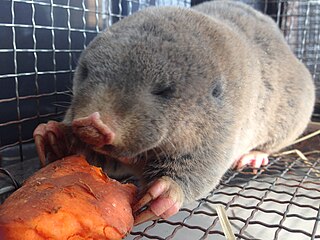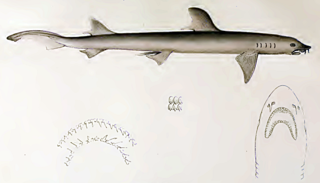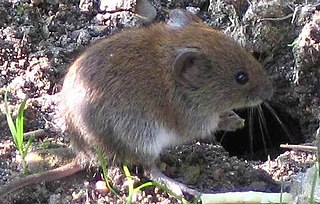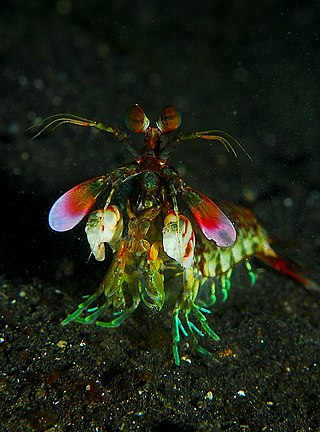
Zokors are Asiatic burrowing rodents resembling mole-rats. They include two genera: Myospalax and Eospalax. Zokors are native to much of China, Kazakhstan, and Siberian Russia.

The wire-tailed swallow is a small passerine bird in the swallow family. It has two subspecies: H. s. smithii, which occurs throughout Africa, and H. s. filifera, which is found in southern and southeastern Asia. It is mainly resident, but populations in Pakistan and northern India migrate further south in winter. The genus name Hirundo is the Latin word for swallow. The species name smithii commemorates Christen Smith, a Norwegian botanist and geologist.

Sir Andrew Smith was a British surgeon, explorer, ethnologist and zoologist. He is considered the father of zoology in South Africa having described many species across a wide range of groups in his major work, Illustrations of the Zoology of South Africa.

Red-backed voles are small, slender voles of the genus Clethrionomys found in North America, Europe, and Asia. In recent years the genus name was changed to Myodes, however a 2019 paper found that Myodes was actually a junior synonym for Lemmus, thus making it unusable. As such, Clethrionomys is re-established as the proper genus name.

Syzygium smithii is a summer-flowering, winter-fruiting evergreen tree, belonging to the myrtle family Myrtaceae. It shares the common name "lilly pilly" with several other plants.It is planted as shrubs or hedgerows, and features: rough, woody bark; cream and green smooth, waxy leaves; flushes of pink new growth; and white to maroon edible berries. Unpruned, it will grow about 3–5 m (9.8–16.4 ft) tall in the garden.

Gekko smithii, commonly known as Smith's green-eyed gecko or the large forest gecko, is a species of lizard in the family Gekkonidae. The species is native to mainland Southeast Asia and Indonesia.

The brown roofed turtle is a species of turtle in the family Geoemydidae. The species is endemic to South Asia. Two subspecies are recognized.

The barbeled houndshark is a species of ground shark and the only member of the family Leptochariidae. This demersal species is found in the coastal waters of the eastern Atlantic Ocean from Mauritania to Angola, at depths of 10–75 m (33–246 ft). It favors muddy habitats, particularly around river mouths. The barbeled houndshark is characterized by a very slender body, nasal barbels, long furrows at the corners of the mouth, and sexually dimorphic teeth. Its maximum known length is 82 cm (32 in).
Smith's vole is a species of rodent in the family Cricetidae. It is also known as Smith's red-backed vole and is found only in Japan.
The Rothschild's zokor is a species of rodent in the family Spalacidae. It is endemic to China.

The Smith's shrew is a species of mammal in the family Soricidae. It is endemic to Southwest China, living primarily in mountainous broad-leaved forests at elevations of 900–3000 meters.

The Myodini are a tribe of forest voles in the subfamily Arvicolinae. Species in this tribe are:

Eucalyptus smithii, commonly known as the gully gum, gully peppermint, blackbutt peppermint, or ironbark peppermint, is a species of medium-sized to tall tree, sometimes a mallee, that is endemic to southeastern Australia. It has rough, compact bark on the trunk, smooth ribbony bark above, narrow lance-shaped adult leaves, flower buds in groups of seven, white flowers and cup-shaped, bell-shaped or hemispherical fruit.

Alexander Hanchett Smith was an American mycologist known for his extensive contributions to the taxonomy and phylogeny of the higher fungi, especially the agarics.

Gonodactylus smithii, also known as the purple spot mantis shrimp or Smith’s mantis shrimp, is a species of the smasher type of mantis shrimp. G. smithii are the first animals discovered to be capable of dynamic polarization vision. They are identified by their distinctive meral spots ranging from maroon to purple with a white ring, though those that inhabit depths below 10 meters tend to be colored maroon. They also have raptorial dactyles, specialized forelimbs that are pigmented green and red, and antennal scales that are yellow.

Eospalax is a genus of rodents in the family Spalacidae. It contains these species:

Richard Gordon Smith was a British traveler, sportsman, and naturalist who traveled extensively in the late 19th century and lived in Japan for a number of years.
Gilbert Morgan Smith was a botanist and phycologist, who worked primarily on the algae. He was best known for his books, particularly the Freshwater Algae of the United States, the Marine Algae of the Monterey Peninsula and the two volumes of Cryptogamic Botany.
Melica smithii is a species of grass that grows in the Canadian provinces Alberta, British Columbia, Quebec, Ontario, and the US states Idaho, Michigan, Montana, South Dakota, Washington, Wisconsin, and Wyoming. The species is named after Charles Eastwick Smith.
Lepidophyma smithii, Smith's tropical night lizard, is a species of lizard in the family Xantusiidae. It is a small lizard found in Mexico, Guatemala, and El Salvador.














